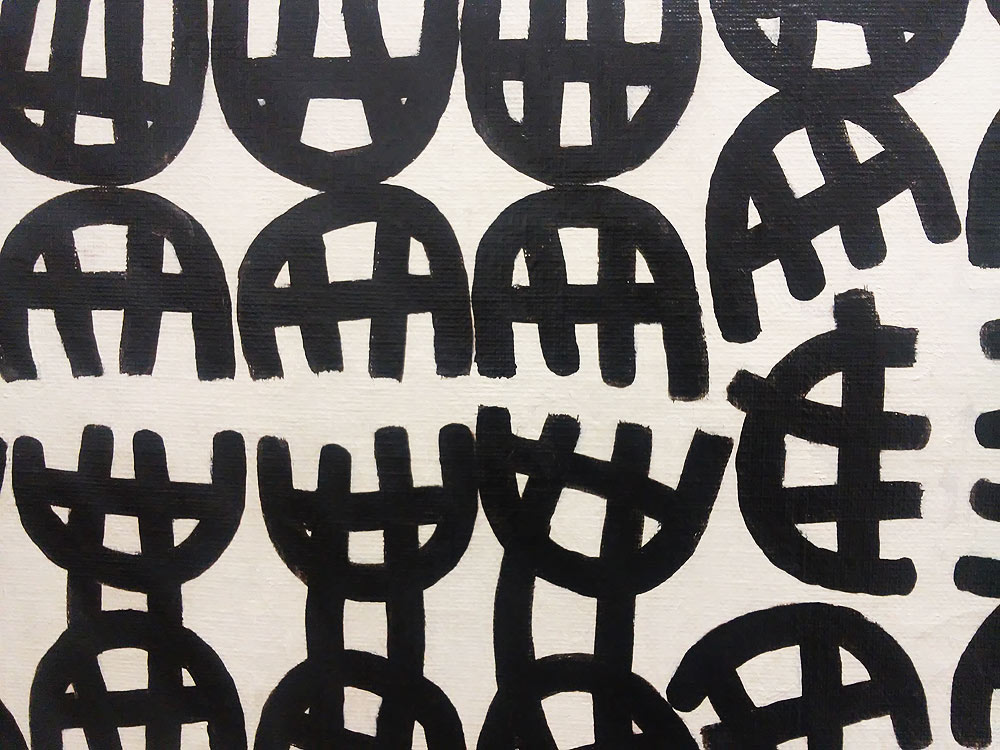“It was 1965. I wasn’t yet interested in collecting, but I was a curious young man. I met the printer, publisher, and artist Renzo Sommaruga in a gallery, where he approached me and said: ‘You shouldn’t look at the rough works, but at the true artworks!’
We started to meet regularly. Renzo was an incredible person; he began printing poems accompanied by lithographs and engravings by important artists. One day, he showed me the draft of an editorial project: poems by Quasimodo accompanied by nine etchings by Gentilini, Saetti, and others, including one by Capogrossi. It was a revelation. A whole new world opened up to me. I had never seen anyone try to use a new language, made of signs, that brought me into an unknown world. A true discovery. I understood that art can give you new tools to understand reality in a way you had never imagined before.”
Giuseppe Capogrossi was born in Rome on March 7, 1900. He began his career as a figurative painter until the post-World War II period, when he revolutionized his art by dedicating himself to informal sign-based painting. His art is characterized by a peculiar and unmistakable style, centered on the representation of an elementary and highly communicative graphic sign, which is repeated in a variety of combinations.
Over the years, Capogrossi expanded this primary element, often referred to as a “comb” or “prong”, by introducing letters, zigzags, and hatchings. Starting from these elementary signs, arranged according to ever-changing patterns, Capogrossi created infinite variations on the theme aimed at exploring the relationship between sign and space and developing the rhythmic sense of the image.
“Another enlightening experience happened in 1969. I went to Milan, still with Sommaruga, for one of his trips related to an editorial project, and someone handed me an A4 sheet with holes punched in it. It was ‘another blow to the head.’ An artist who was bringing me into a new dimension, in an apparently simple way.
It was only later that I managed to buy a work by Fontana, in a private gallery. The piece, small, cost 3 million lire, little for such an artist but not so little for me, as I was young and had little money. I gathered courage and proposed to the gallery owner a purchase ‘in installments,’ meaning one million lire upfront and the rest when I could afford it. He accepted…
It was a gray aniline with holes and white ovals, and the whole thing reminded me of one of those old photos of grandparents, where faces emerge from the ovals. Memory emerging from another dimension.”
It was in 1950 when Fontana initiated the Spatialism movement.
His works are characterized by monochromy on which the artist acts, not with the traditional brush, but with unconventional tools such as knives, razors, and similar objects. Since this gesture was easily replicable, the artist, to distinguish his works from those of imitators, placed behind each of his pieces nonsensical phrases, apparently attributable only to him.
Biografia
GIORGIO FASOL | Born in Verona in 1938, he is one of the most important Italian art collectors. From his great passion for contemporary art, the significant private collection Agi Verona Collection was born. In 1988, he made his first loan: five works exhibited at Arte Fiera Bologna in an exhibition curated by Silvia Evangelista dedicated to research on Italian collecting. Since then, the works in his collection have continuously traveled, being requested and loaned to museums and foundations around the world and exhibited in exhibitions and showcases focused on contemporary artistic language.
In 2010, from May 7 to August 22, the Mart Museum in Rovereto dedicated an exhibition to him titled Languages and Experimentations, curated by Giorgio Verzotti with the extraordinary participation of Hans Ulrich Obrist. The exhibition featured 70 works by young artists (aged 20 to 35), all created between 2000 and 2010, while another 25 works by international artists were deposited at the Mart Museum on loan. Numerous interviews appeared in industry magazines and national newspapers.
